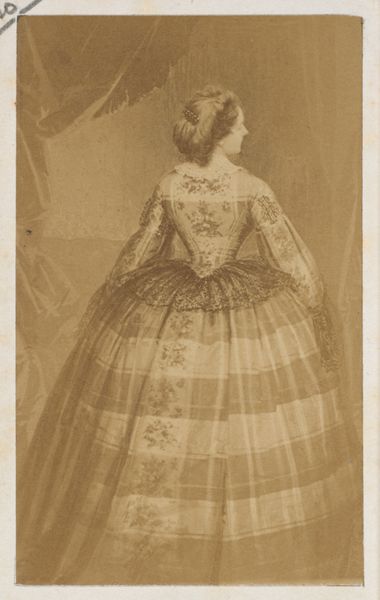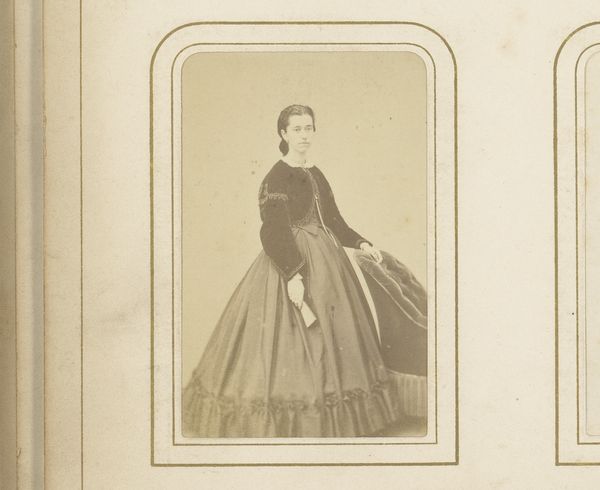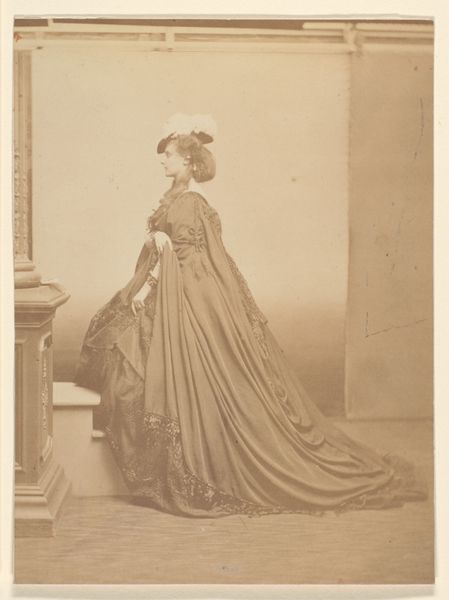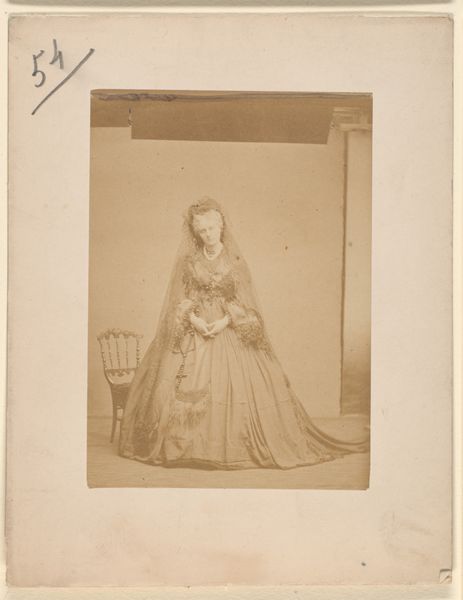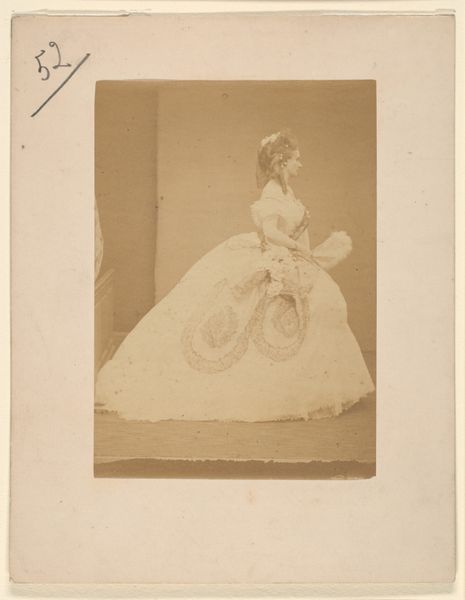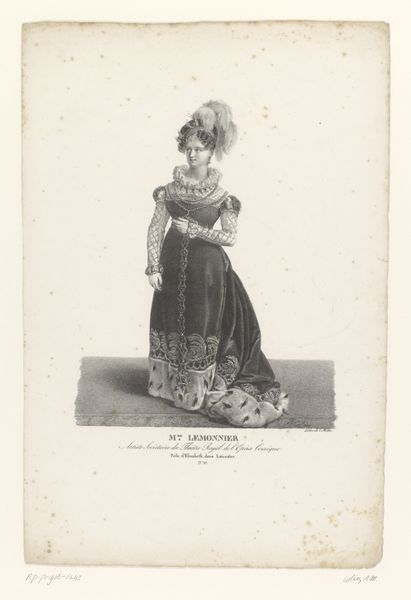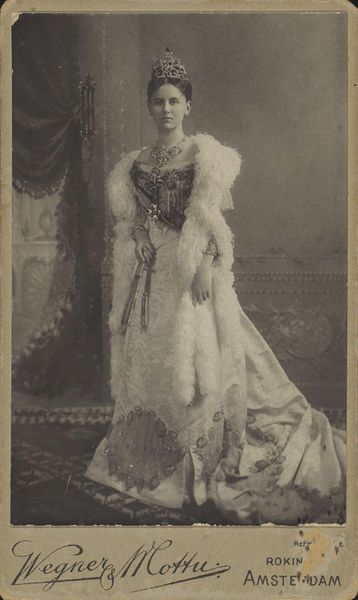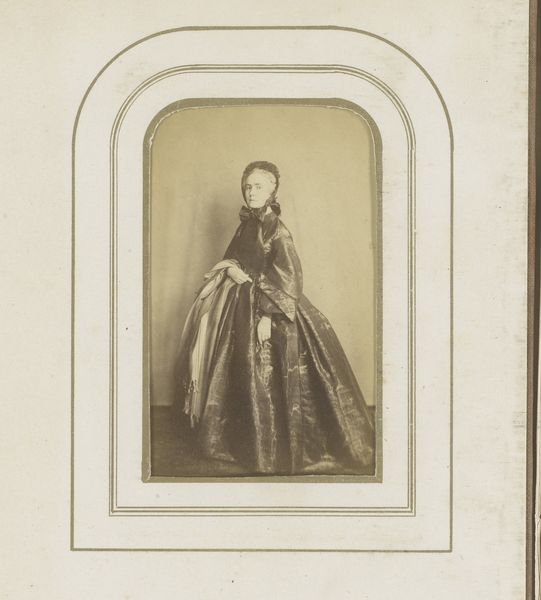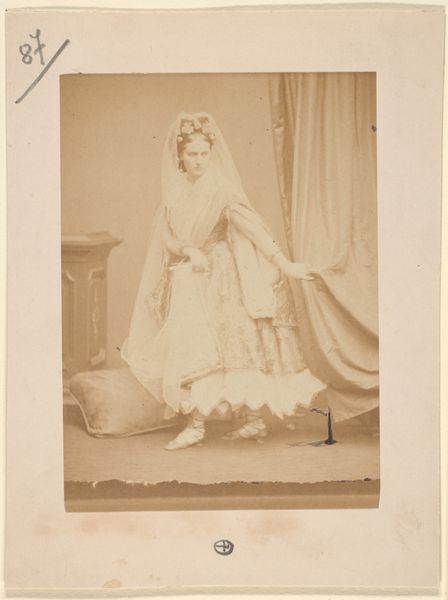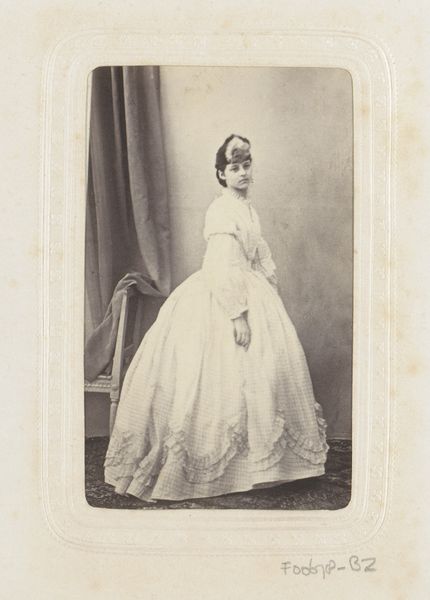
Dimensions: height 87 mm, width 53 mm
Copyright: Rijks Museum: Open Domain
Curator: We're looking at a photograph entitled "Portret van een staande vrouw" which translates to "Portrait of a Standing Woman". The image is attributed to Georg Knittel & Comp and likely dates from sometime between 1860 and 1870. It's a gelatin-silver print, common for the period. What strikes you about this image at first glance? Editor: The gown, certainly. The sheer volume of fabric dominates the composition. There's a stillness, too. A contained elegance despite the pattern's seeming busyness and the frilled neckline that softens its effect. Curator: These photographs, these portraits, they weren’t just personal mementos. For the sitter, it was about self-presentation, signalling social standing and aspirations through clothing, accessories and studio props. The democratization of photography changed who could participate. Though still not cheap, photos made portraiture affordable to the emerging middle class. Editor: It’s fascinating to consider that shift in the social order. Looking more closely at her dress, its complex pattern almost anticipates the all-over compositions we see later with impressionism, disrupting clear forms. See how her sleeves swell at the wrist, in concert with her expansive gown. Her hand seems almost incidental against it, resting formally on that dark veneered plinth. Curator: I agree. And let’s consider that very formal pose against a generic studio backdrop. In contrast, the props - like that draped table - would be carefully selected for associations of wealth and culture. This kind of photographic portrait became part of a broader visual culture that influenced perceptions of beauty and social identity. Editor: She holds herself stiffly erect. Almost bravely. I wonder what personal narratives are obscured beneath its visible trappings? It’s difficult to see photographs like these merely as archives, once one looks past their immediate content. Curator: Precisely. Viewing photographic portraits from this era means looking beyond simple representation and instead considering the complex interplay of societal forces, individual agency, and the technological shifts occurring in image production. It is far more about the context and power. Editor: Ultimately, it is about the unseen story—both how the photograph functions and her own unwritten one. The tension lies in what's revealed and concealed within the frame, then as now.
Comments
No comments
Be the first to comment and join the conversation on the ultimate creative platform.
